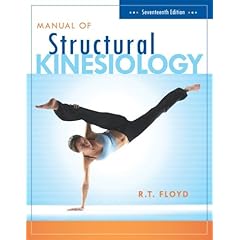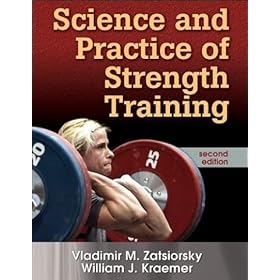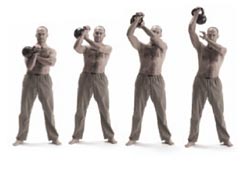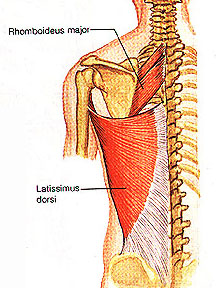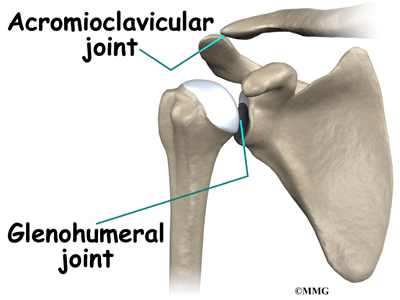I'd like to talk about a nervana experience i just had, the last day of this year, working on my clean and press. As some of you know, i've been trying to improve the strength of my press by following a version of Kenneth Jay's beast pressing protocol. I've celebrated the effect of volume on form, and how that translates to strength. I've lauded strength as a skill that practice of correct form gives.
In this post i'd like to talk a bit about related insights that come from high volume (by "high volume" i mean LOTS of practice) and how this lead to an insight about the clean that might be useful to you, and how it lead to a PR for me in a C&P set, with heavy emphasis on the "personal" part of PR.
Making Connexions: the Ten Thousand Things
I've recently been listening to the audio book of Gladwell's Outliers. His mission is to show that success is not talent alone - the myth of the self-made man (sic) - but that it is a combination of talent, opportunity and context. This is all pretty much sociology 101 (at least the way it was taught 10-15 years ago): nothing is in isolation; we are all products of our context, and some of those are the context of "demographic accidents." Take sports training for hockey in canada or football (soccer) in the EU.
He Shoots and Shoots and Shoots and Shoots - and then He Shoots and Scores.
 Gladwell demonstrates how, alas, the canadian hockey training system (and football/soccer) is biased towards kids born in the first few months of the year, and how statistically kids born in the last quarter might as well not apply. No really, the pure stats are overwhelming - all because the system biases towards kids at a very wee age who have a few more months maturity than their younger peers at a time when those few months makes a BIG difference.
Gladwell demonstrates how, alas, the canadian hockey training system (and football/soccer) is biased towards kids born in the first few months of the year, and how statistically kids born in the last quarter might as well not apply. No really, the pure stats are overwhelming - all because the system biases towards kids at a very wee age who have a few more months maturity than their younger peers at a time when those few months makes a BIG difference.As Gladwell argues, if the system had two or three periods - phasing in testing of kinds when they're ALL at exactly the same age - +/- a month or so, then the sporting world could double (or triple) its talent pool.
The key thing that Gladwell pulls together with this work is that these kids who are selected to play hockey in special teams get more ice time, more coaching, contact with better players etc etc etc. There's a cumulative effect that such that by the time they're leaving highschool, they are so much better than their casual hockey playing peers, there's no contest.
Practice - And a lot of it for Expertise
Indeed, in the most impressive part of the book to me, Gladwell shows that a person, to reach this kind of Expert level, needs to put in 10,000 hours of practice: effort with the intent to improve performance.
He goes over cases by other researchers looking at virtuoso musicians. Not one - not one! - of them (including, we see, Mozart) got away with less than 10k hours of practice to achieve mastery of their area. This is critical: there were no stars who rose to top on talent alone without this effort - equivalent to 3 hours a day, every day, for ten years. Gladwell shows that practice time ramps up over time, so it's not actually 3 hours a day non stop, but progressively building building building for a child, to a teen.
Aside: How to get 10,000 hours is no small thing: sometimes it's the result of so many cascading opportunities it's no wonder one has to be in the right place at the right time, over and over again with the wit to take advantage of those opportunities. The cases in the book make this stunningly clear and hard to deny. The affluent youth is certainly at an advantage over a less affluent youth, for instance, whose practice time may be more taxed because they have to hold down jobs - unless their jobs feed into what they want to practice in any case.
How does all the above story of practice relate to the Clean?
I'll come onto what i think is happening with the Clean and Practice in a moment. First a bit of background.
In the past month, i have not done 10 ooo cleans or presses. I've not cracked 1000. I've done around 700 presses and 150 cleans. It's interesting to start adding these things up. Makes me kinda go "only 700?? - you call that "high volume"? and yet that's 150+ reps a session on high days. So what have i learned from as *little* repetition as sub 1000 reps? Form, breathing, and today THE CLEAN.
Here's the deal: Good clean (seems to) equal(s) "Going Small"
The last big day i had that was supposed to be my "heavy" day doing maybe 12 complete reps with the 16k if i'd amazingly doubled on the week before turned out to be 36 reps - a 6 fold increase on the previous week. I put this down to improved attention to breathing technique.
 Doing a few C&P during the week, i tried getting some sense of a ladder of C&P's: if i could do 36 singles a side, surely i could do at least 2 consecutive C&P's on the left? While i found i could do is three C&P's in a row on the right, but still stuck on singles in the left. Indeed, while i could fire off five presses in a row on the right with the 16, i could not get more than 2 presses (not C&Ps) on the left, and usually just 1.
Doing a few C&P during the week, i tried getting some sense of a ladder of C&P's: if i could do 36 singles a side, surely i could do at least 2 consecutive C&P's on the left? While i found i could do is three C&P's in a row on the right, but still stuck on singles in the left. Indeed, while i could fire off five presses in a row on the right with the 16, i could not get more than 2 presses (not C&Ps) on the left, and usually just 1.This did not make sense to me physiologically. What was the problem?
Today, after a break from concerted heavy pressing of 9 days rather than the usual 6, i wanted to focus on consecutive C&P's after doing some partials work with a 20 (mm mm good). As before, i start with the strong/more coordinated side first. The first thing i noticed is that the clean seemed a wee bit easier - feeling more like the 12 than the 16. I also noticed that the whole breathing/form cycle was feeling more like the light day (work with the 12 and 8) than it had with the 16. That is, i was able to exhale a bit on the lowering of the arm, and definetly exhale on the drop (i'd been rereading pavel's discussion of the drop in ETK so this bit on form was fresh in my mind).
When i moved to my left side for the first attempted set of c&p's i failed just as usual when going for the second C&P. Stupid. Put the bell down, do a C&P from scratch with little recovery and there it is. Try the second; nothing. Shite.
Ok, now for the big Clean observation:
So i went back to the right. and really focused on the clean, really hearing brett from his kettlebell basics for strength coaches and personal trainers dvd (recommended) echoing pavel in ETK about the clean as so crucial for a good press. That's when i got the first sense of an ah ha. The clean was a little thing. A small move. Ya ya i know: we practice tame the arc, but in my conceptualization of the 16 as "heavy" i was reefing on this thing to get it up while still keeping a technically tamed arc.
When i tried deliberately what i'll call "going small" on the left hand side, the bell sorta landed in a slightly different place; it felt different around my wrist. Inhale. Up it went. ok. try that again for a single. good. up it went. do the drop for the repeat, go small up, there's that neat landing. UP! i just got two reps - no hip - pure and clean, literally. come down, go for the drop, go small into the clean, same landing, up it went. I got four fricking non-stop C&P's in a row on my left side. That's a personal record. Personal especially in that there's no competition where 4 C&P's in a row is a big deal, but it's a meaningful bench mark for me, i can tell ya. And it seems to be unequivocably the result, yet again, of technique technique technque. But how did i *get* that technique?
This is where i think the 10k comes into play.
If Strength is Also a Skill, where are our Ten Thousand Hours?
I have been focused on this move diligently with reps. So there's practice. I've also been teaching intensely over the past week, including teaching the clean (which i've found is way harder to get than the high pull; it's easier to teach the high pull first and then come back to the Clean as a "low pull" - first part before the stab up). Because of this effort to communicate to others, i've been thinking a lot more about it myself - wondering if it's been a lame clean that has screwed up my left side performance of consecutive C&P's over singles.
Combine these efforts today with intent to explore possibilities. Explore being less formal than experimental design; more "hacking" as it's called in software engineering. Good hackers are principled about their hacks: they narrow the set of possibilities they could try to likely candidates. I make this distinction lest the interpretation of "hacking" be read as assing around till something comes up. And in this case, quite early in the exploration, a solution was developed.
I doubt however that this combination of effects leading to a solution would have happened without all the previous rep work that had done two things: (1) improved overall technique in the press, so that the press technique, including breathing as part of that technique, could be ruled out as the problem (2) genuinely improved strength sufficiently so that the 16 was experienced as light(er) enough to enable less of a pull to get it up (really, it has been pretty ugly). Bring those things together, and inside a month i've gone from 1 press on the left to 36 singles, to now four full and consecutive C&P's on the left with more in the tank.
This to me, ok, incredible progress (some strength; mostly technique) has come with sub 1000 reps. Imagine what might be possible with 10,000? Or in terms of time, each workout being half an hour just focusing on the press, twice a week. That's one hour a week over 4-5 weeks. Hardly anywhere near 10 thousand hours, is it? It's 0.05 of a percent. A drop in the bucket or an intent-ful start?
Not just Practice But practice practice practice - with intent
What's the old joke about "how do you get to Carnegie Hall?" and the reply is "Practice, practice, practice"? Gladwell showed that the researchers looking at musicians demonstrated that those who would get to carnegie hall did indeed practice - but they practiced alot - and they practiced a lot more than the next level of proficiency down from them. Likewise with other models of 10k success he describes. Before they became field leading experts, no matter their native ability, they got in their 10k hours.
Mine is not a story of 10 thousand hours. In my case, i'm looking at reps rather than hours - the two are not entirely interchangeable, but when we look at learning, there is an argument that says for something to become automatic or effortless we need that many reps.
Perhaps the big Lesson of 2008 in terms of strength as a skill practice for me, and the one i'll take into the New Year is the incredible value of practice and of practice via high reps. I've heard it said before strength is a skill; treat your training as practice, but you know they were just really words before. Now those words have real and proven meaning to me.
So, micro lesson here: the clean - if your C&P is not getting you to where it should be, consider making the clean a smaller pull. It may take awhile to build up the strength to do that, but once you do, and can execute "going small" in the clean, you may find your C&P's start to track in line with your expectations. I'd be keen to hear if that helps you.
macro lesson: practice is good, fun, rewarding - more and more often, please.
A lot of exercise strategies stress "see results in only 15 minutes a day" with the obvious rationale that people have other things they want to do with their lives than be in the gym. That's fine. Charles Staley's EDT is based on 15 minute zones. Pavel's Program Minimum can be 15 mins a day.
I think a lot of us haven't thought of our workouts really really *as* skills we're developing. For myself, for instance, i wanted to be taught correct form and practice it in order to get strong. The end game was to lean out, get strong, show others (especially geeks) how to do likewise. In other words, learn the form, then just do it a lot. Like those mind bendingly boring scales on the piano: know how to do the finger positions, then just keep doing them and upping the tempo. Not that swinging a KB has ever been boring like scales were as a kid, but i have been known to have the TV on while doing them.
So where does the ten thousand hours equals expert come in here? What i'm getting from strength as a skill, as a practice, is that there are levels of expertise to something as simple as pressing a weight. I kinda had an inkling of that the first time i saw Will Williams do a KB front squat, but i didn't make the connection between that and that practice practice practice isn't just doing scales, it's doing each rep with *intent* to learn and do better.
Hearing the Obvious - finally: the Tao in the Ten Thousand Things is Real
Reading the above back, it all seems so basic: i'm not saying anything new. But i guess it's taken this journey of exploring the Perfect Rep to really hear this message. This is a nice conclusion to a big year of learning and practice: RKC, nsca cscs, zhealth, fms, and this past week completing the ck-fms. It's nice to wrap up with something approaching an insight or better understanding of the meeting and meaning of strength as a skill.
So for the new year, i hope for all the folks who have been kind enough to read through this and make it to the end, that you find new love and purpose in your practice of strength, and if not new, then reinvigorated. I hope for you a year filled with health and practice so engaging that you don't hit any dry patches where you lose faith, stop working out for any length of time. So i guess i hope you find a way to practice daily, to get to a love of practice that takes you to your own 10k in fitness and in health.
All the best for 2009,
mc
Rest is good!
it's a Little Thing - the little clean
Why avoid practice?











